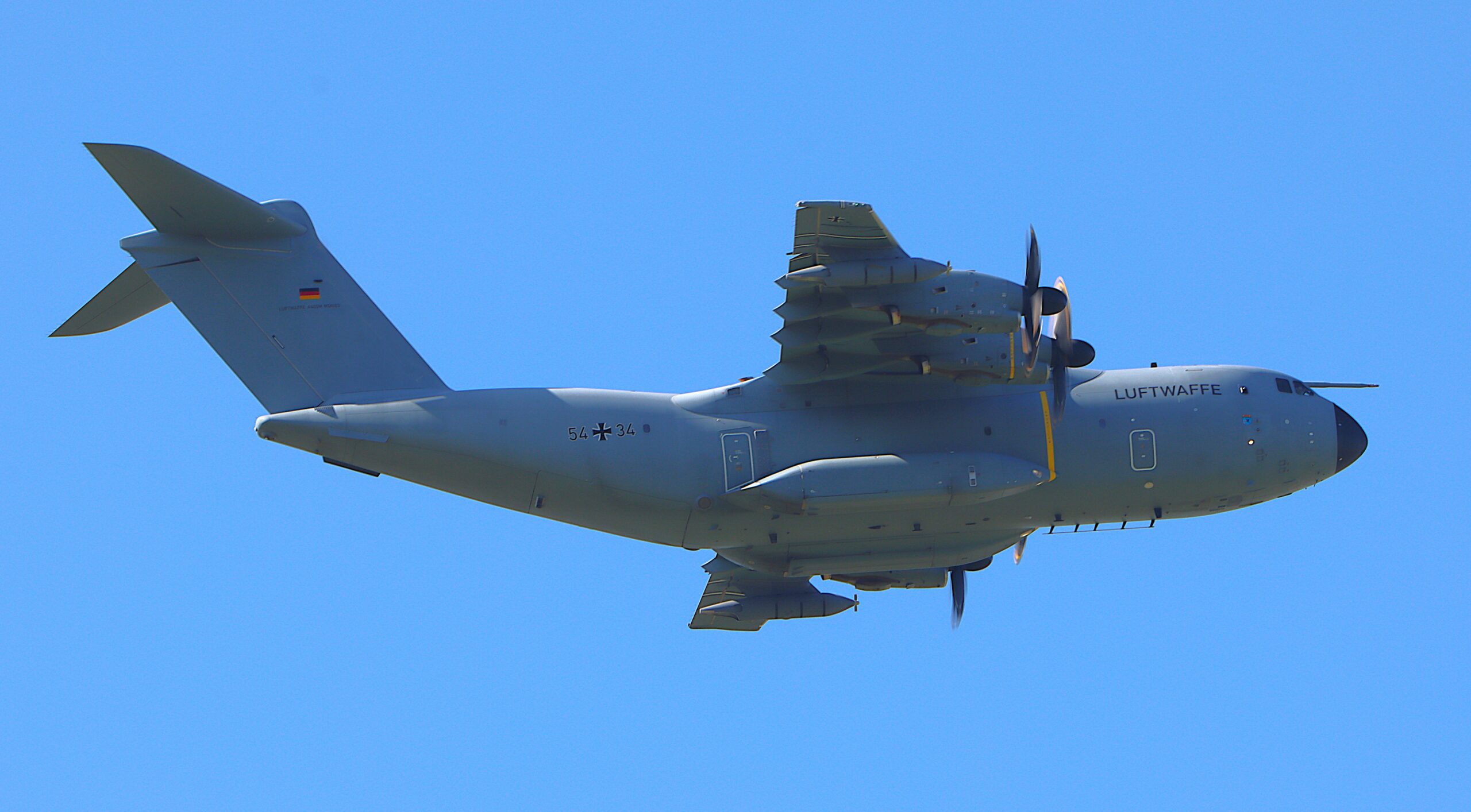Ostrawa 2025-09-27
Airbus A-400 M Atlas.
The Airbus A-400M Atlas is a new-generation, four-engine European transport aircraft designed by Airbus Defence and Space. The aircraft was developed in response to European countries’ demand for a plane combining strategic and tactical airlift capabilities. It was an attempt at a European response to the American Boeing C-17. Unfortunately, Europe was already far behind the Americans, and the West, in addition, began cooperating with the Moscow government, a state that was not subject to reform. The Airbus A-400M Atlas can carry heavy payloads such as helicopters, armored vehicles, missiles, and artillery. The aircraft can operate from short and unpaved runways (RWYs) and act as an aerial refueling vehicle for other military aircraft. The aircraft was developed as a joint European program. The Airbus A-400M Atlas made its first flight on December 11, 2009, and entered operational service in 2013.
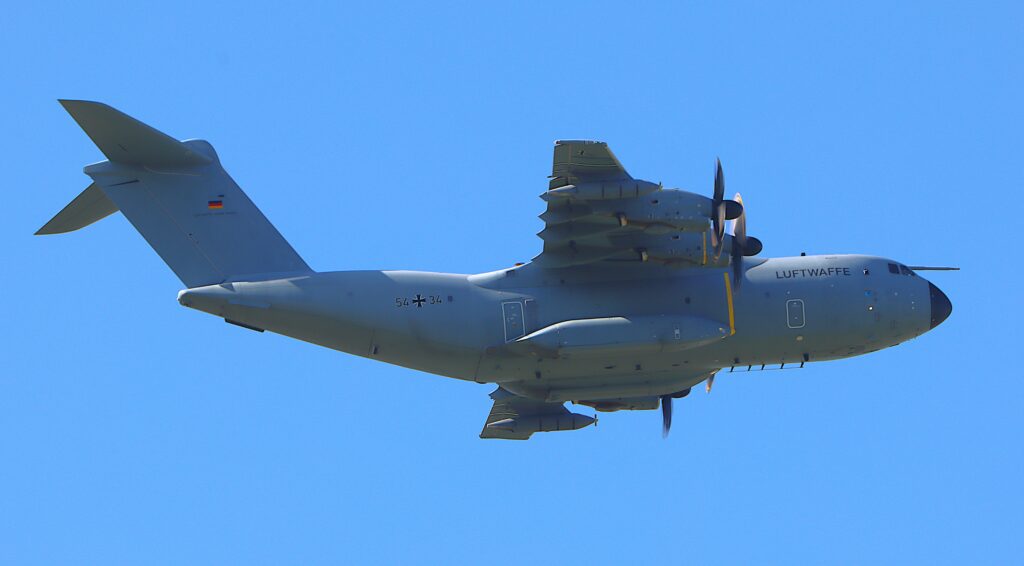
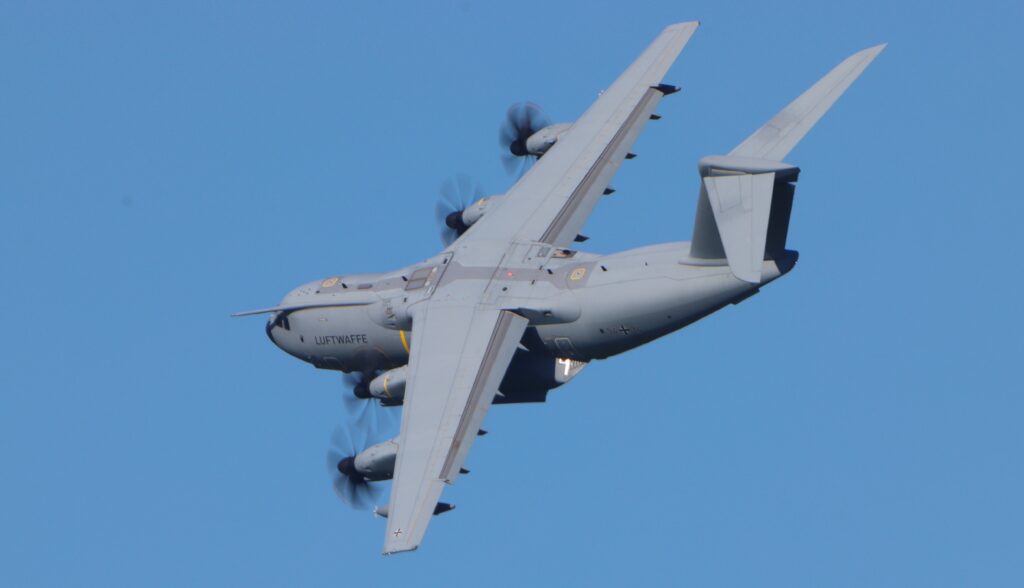
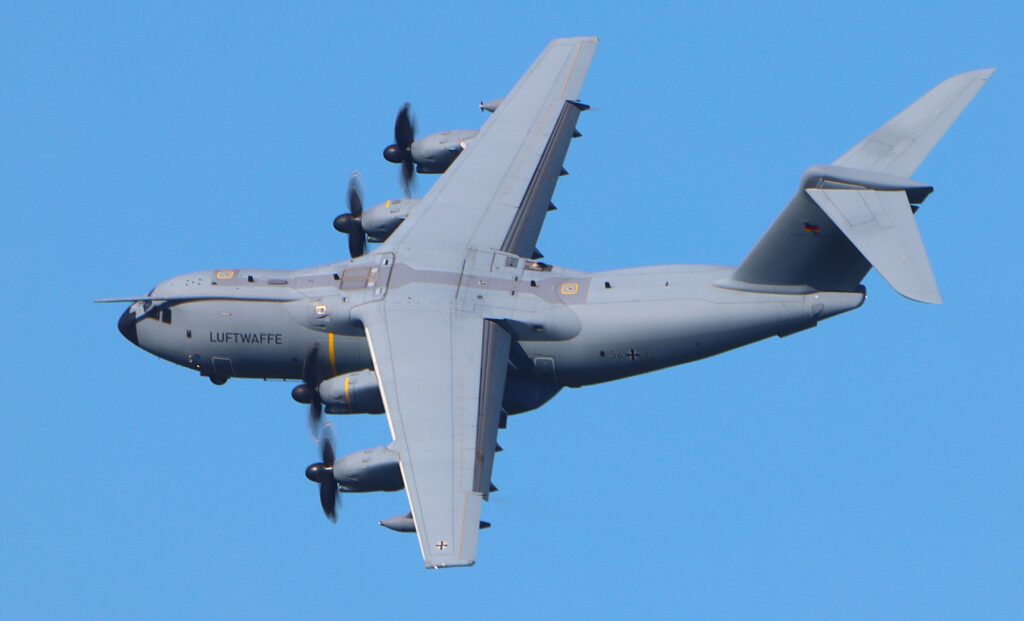
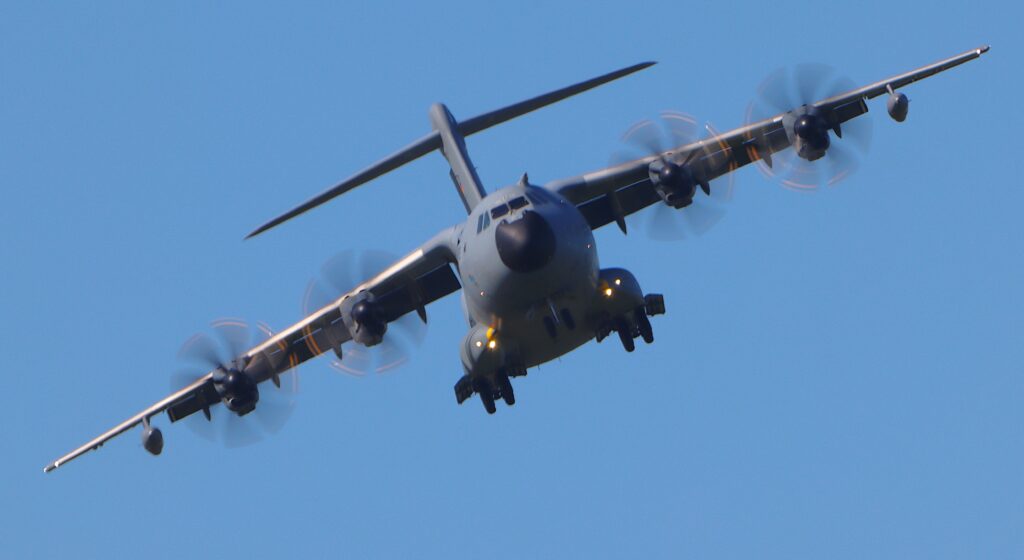
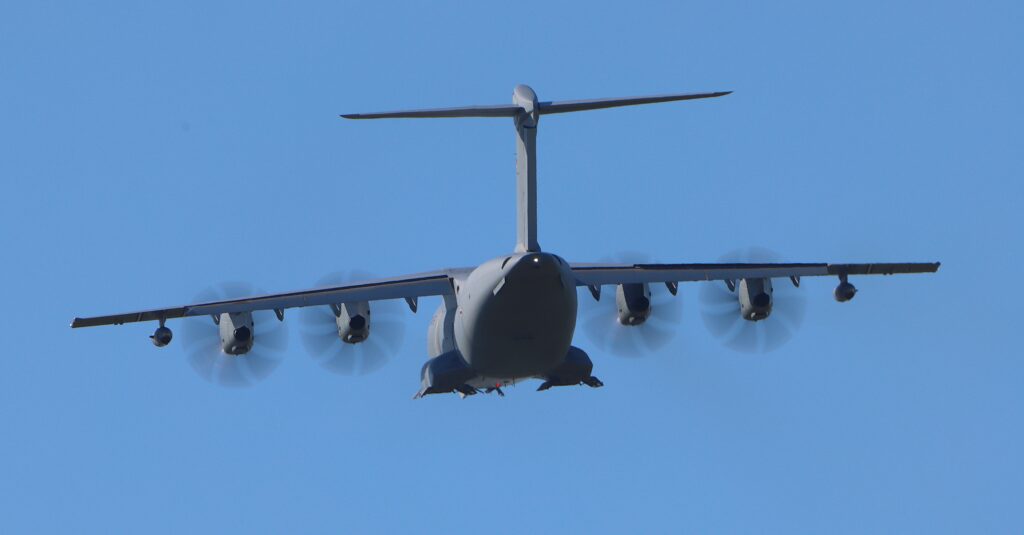
The Airbus A-400 M Atlas is powered by four turboprop engines manufactured by Airbus Military. After many years, this type of propulsion was reintroduced after Soviet aircraft; The Tu-95 (Tu-20), Tu-114, and An-22, all of which used NK-12 engines. These engines gave the Tu-95 a cruising speed of 790 km/h, the highest speed for a propeller-driven aircraft.
The Airbus A-400 M Atlas program was launched in 1982. Aérospatiale, British Aerospace, Lockheed (now Lockheed Martin), and MBB were involved in the A-400 program. However, politics dominated the program. It was repeatedly interrupted due to disagreements over tactical and technical data. The Lockheed consortium was the first to leave the program, focusing instead on modernizing the C-130 Hercules. Alenia and CASA joined the program. The company was named Euroflag. The declared order was for 212 aircraft. However, shortly afterward, the Italians withdrew from the program. The order was revised to 180. On April 28, 2005, South Africa joined the program. However, further delays arose, and the program was threatened with suspension. This led to contractual penalties being imposed on the builders for the significant delays. Airbus demanded that the countries that placed orders for the aircraft waive their right to enforce contractual penalties. In July 2009, due to technical problems with the A-400M engines and significant cost overruns, the program was threatened with termination. The Defense Ministers of Germany, France, the United Kingdom, Spain, Turkey, Belgium, and Luxembourg agreed on new contract terms and agreed to pay contractual penalties by EADS. Penalties were also imposed for the military having to lease aircraft from the United States. The revised contract included reduced requirements for the aircraft. Maximum range was reduced from 9,300 km to 7,000 km. Payload capacity was reduced from 39,000 kg to 37,000 kg. The aircraft were scheduled for delivery in 2013.
The first flight of the A-400M prototype took place in Seville, Spain, on December 11, 2009. Five prototypes were built. The final assembly line was also located in Seville. The center wing was manufactured in Nantes, France. The wings were manufactured in Milton, UK. The fuselage was manufactured in several plants, in Spain and Germany. Serial production envisaged the construction of 30 aircraft per year. On March 6, 2013, the production aircraft made its first flight. The aircraft was presented at numerous trade shows and widely promoted.
On May 9, 2015, one minute after takeoff for a test flight, the pilots reported a problem with the aircraft and soon began returning to Seville Airport. Within minutes, they knew they would not reach the runway. Fifteen minutes after takeoff, while making an emergency landing in a field a mile short of the airport, the aircraft struck a power line and crashed at a speed of 167 knots (approximately 309 km/h). Four of the six crew members died, and two were hospitalized in serious condition. Flight MSN23 was destined for Turkey. All A-400 flights were suspended. The aircraft experienced a control system failure, and three engines were still idling. Airbus A-400M Atlas aircraft were delivered to: Germany (32), France (17), Spain (8), the UK (22) (the only country to accept all ordered aircraft), Turkey (9), Belgium (7), Luxembourg (1), and Malaysia (4). Of the 174 ordered, only 92 were delivered. South Africa ordered 8 aircraft but cancelled the purchase. Chile ordered 3 aircraft but ultimately decided against purchasing them. In 2021, Indonesia was expected to sign a contract for 2 aircraft.
T-T Airbus A-400M Atlas specifications: Crew: 3 (pilots + loadmaster). Length: 45.10 m. Wingspan: 42.40 m. Height: 14.70 m. Empty weight: 76,000 kg. Maximum takeoff weight: 141,000 kg. Cruise speed: approximately 780 km/h, Mach 0.72. Payload capacity: up to 37,000 kg (116 fully equipped troops, two NH90 helicopters, armored vehicles). Cargo bay dimensions: 17.7 m × 4.0 m × 3.85 m. Engines: 4 × TP400-D6 turboprops (4 x 11,000 hp). Range with a 20,000 kg payload: approximately 6,400 kg. Range with a 37,000 kg payload: approximately 3,300 km. Service ceiling: 11,300 m.
Comparison of the A-400 and C-17. The Airbus A-400M Atlas is positioned between the medium-sized C-130 Hercules and the heavy-lift Boeing C-17 Globemaster III. The Boeing C-17 Globemaster III is a heavy strategic transport. Payload up to 77,500 kg (over 2 × more than the A-400 M). The cargo hold has dimensions of 26.8 m × 5.5 m × 3.8 m. The aircraft carries 134 fully equipped troops. Range with a payload of 72,000 kg – 4,450 km. Range with a payload of 40,000 kg – 8,200 km. Cruise speed 830 km/h (Mach 0.74). The Boeing C-17 requires longer runways (RWY), but can still operate from unpaved airfields (although more difficult than the A-400 M). The C-17 aircraft is equipped with the following engines: 4 × Pratt & Whitney F117-PW-100 (40,440 lbf) turbofan engines. The C-17 aircraft can carry tanks and heavy vehicles (for example, the M1 Abrams), while the A-400 M is limited to lighter combat vehicles.
The history of the Airbus A-400M Atlas is intertwined with the Ukrainian-Moscow Antonov An-70. Design of the Antonov An-70 began during the CCCP era. The aircraft was intended to be the successor to the Antonov An-12. Both projects developed concurrently, and there was even some cooperation for a while. The Soviets were keen on Western electronics, which would enable the An-70 to be sold worldwide. The An-70 made its first flight in 1994. Four Progress D-27 turboprop engines with contra-rotating propellers were selected for power. The An-70’s payload capacity was 47,000 kg, greater than the A-400M. The range with a payload of 20,000 kg was to be 7,500 km.
In 1993, talks were held between Europe, Moscow, and Ukraine regarding a joint An-70 program for NATO countries. Let’s remember that at the time, the A-400 program was in crisis. Europeans (Germany and France) were exploring the possibility of purchasing or jointly producing the An-70, rather than developing their own aircraft. In 1997, a framework agreement was even signed between Antonov and Airbus. This was very strange, because in 1995, the An-70 crashed. The plane broke up upon landing, though fortunately remained in one piece. In the West, the frequent failures of An-70 aircraft were overlooked. Finally, someone in the West came to their senses. They pointed out the technological backwardness of the Moscow state, and above all, the An-70 program was chaotic due to irregular funding. Western Europe opted for its own project, the A-400M. After the Moscow-Ukraine conflict (2014), the Antonov An-70 project was scrapped. Several prototypes and one production model were built and delivered to the Ukrainian Air Force. However, due to a lack of spare parts, they were quickly grounded.
T-T data Antonov An-70: Crew 4 pilots. Length 40.70 m. Wingspan 44.10 m. Height 16.60 m. Empty weight 67,000 kg. Take-off weight 135,000 kg. Payload 47,000 kg. Cargo bay dimensions 19.1 m × 4.0 m × 4.1 m. Cruise speed 750 km/h. Mach 0.70. Range 7,500 km (with 20,000 kg), 5,100 km (with 35,000 kg). Operating ceiling 12,000 m.
Written by Karol Placha Hetman

